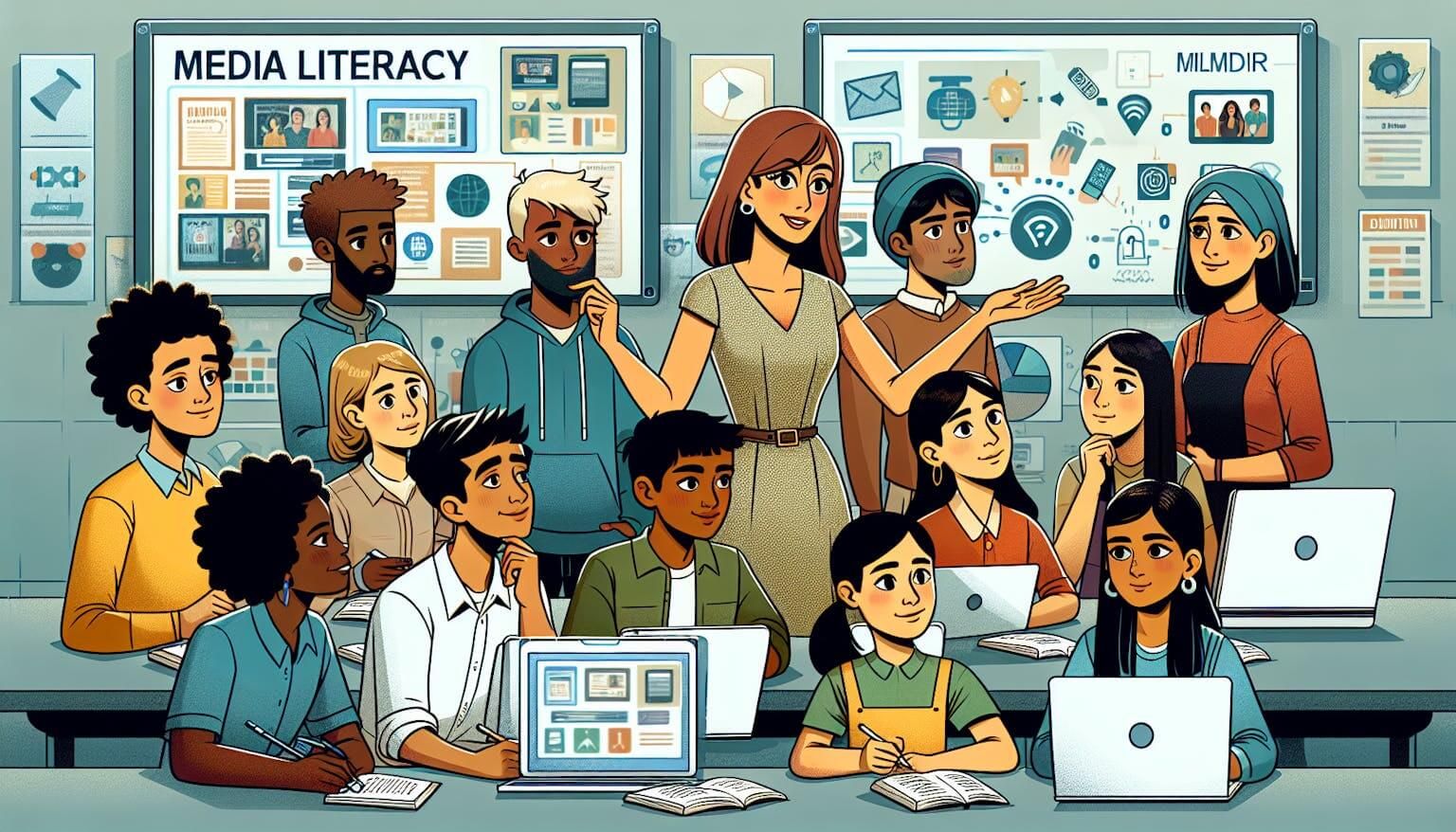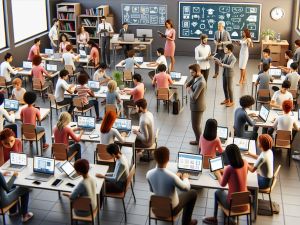Media Literacy Education Student Course
- Description
- Curriculum
- Reviews
Welcome To The Media Literacy Education Course
In today’s interconnected world, media significantly shapes our lives and perceptions. With the overwhelming daily flood of information, being discerning and responsible for media consumption is critical. This course aims to equip you with vital tools and understanding, allowing you to effectively navigate this information-rich landscape.
The course is meticulously structured into several informative modules:
- Introduction to Media Literacy: This will provide you with a deep understanding of media literacy and its importance in classroom education. Clear learning objectives are outlined to guide your journey throughout the course.
- Understanding and Analyzing Political Bias: This module will introduce political bias and its influence on media content. With real-world examples and an introduction to our unique method of analysis, you’ll learn to identify and understand different forms of political bias.
- Practical Exercises and Final Assessment: The course concludes with practical exercises allowing you to apply your understanding. An insightful self-reflection essay and final knowledge check will reinforce your learning and understanding of media bias.
In an era underscored by the rapid dissemination of information, misinformation, and fake news, being media literate is no longer an option but a necessity. This course is designed to empower students, teachers, and avid media consumers with the critical skills needed to interact effectively with complex media landscapes. Whether you’re new to the field or looking to enhance your media literacy skills, this course has something to offer you. Welcome aboard to this enriching journey that promises not just learning but empowerment.
- 11.1 What is Media Literacy and Why Should We Teach it in the classroom
In this section, we will dive deep into the concept of media literacy, exploring its importance and why it is vital to incorporate it into classroom education.
- 21.2 Learning Objectives
Here, we will outline the learning objectives of the course, guiding you through the skills and knowledge you will acquire throughout.
- 32.1 What is Political Bias
This part will introduce you to political bias, explaining its implications on the way information is presented in the media.
- 42.2 Political Bias Through History
We will take a historical journey to understand how political bias has shaped the media landscape over time.
- 52.3 Types of Political Bias
We will discuss the different forms of political bias prevalent in the media, providing you with comprehensive knowledge to identify them.
- 62.4 Media Political Leanings – Examples
Using a range of real-world examples, we will illustrate the varying political leanings present in the media.
- 73.1 Introduction to Media Usage
Explaining the growing dependency on media usage for information and negative effects that come with this dependency.
- 83.2 Social Media and Technology Usage and its Effects
Detailing the overlap of Social Media and Technology Usage.
- 93.3 Analyzing Advertisements and Other Messages
The harmful impact that social media has on our society, in particular children.
- 103.4 Harmful effects of Social Media
Information on how to create habits that limit your daily media usage.
- 113.5 Responsible Social Media Usage
Explore the fascinating interplay between media usage, addiction, and our neurological responses in this lesson. Dive into the dopamine reward system, understand its role in perpetuating addictive behavior on social platforms, and learn practical strategies to curtail excessive media consumption for a healthier digital lifestyle.
- 12Quiz: Responsible Media and Technology Usage
- 133.6 Spread of Misinformation through Social Media
This section explores how misinformation is disseminated through social media platforms and its potential consequences.
- 143.7 Manipulation of Behavior through Social Media
This part discusses the tactics used by social media platforms to manipulate user behavior and the resulting impacts.
- 153.8 Ensuring Social Media Safety
This section provides crucial guidance on maintaining personal safety and security while using social media platforms.
- 163.9 Media and Culture
This section investigates the impact and influence of media on cultural perceptions and societal norms.
- 17Quiz: Media and Culture
- 184.1 Recognizing and Navigating Deepfakes
This section offers strategies to identify deepfakes and advice on preventing their widespread dissemination.
- 19Quiz: DeepFakes
- 204.2 Recognizing and Navigating Fake News
This part provides guidelines on detecting fake news, discerning credible sources, and emphasizes the necessity of reporting misinformation.
- 214.3 On Other Misinformation
This section explores how misinformation spreads in different forms and outlines measures for individual contribution to its minimization.
- 22Quiz: Misinformation
- 235.1 Employing Critical Thinking and Leveraging Information Resources
This section focuses on developing critical thinking skills to effectively evaluate and use various information resources.
- 245.2 Distinguishing Primary and Secondary Sources in Research Methods
This part of the text instructs on understanding and distinguishing between primary and secondary sources in research.
- 255.3 Differentiating Facts, Perspectives, and Opinions
This section brings attention to the nuances among facts, personal perspectives, and opinions, highlighting their importance in information interpretation.
- 265.4 Utilizing Peer-Reviewed Print and Digital Library Resources
This portion provides valuable insights into accessing and effectively using peer-reviewed print and digital resources available in libraries.
- 27Quiz: Critical Thinking
- 285.5 Understanding the Economic, Legal, and Social Implications of Information Use
This section discusses the economic, legal, and social consequences related to the use of information, providing an informed perspective.
- 295.6 Ensuring Ethical Information Production
This section sheds light on the importance of ethics in producing information, focusing on responsibility and integrity.
- 306.1 Introduction to Biasly's Rating Methodology
We will introduce our unique method for analyzing political bias, offering an effective tool to evaluate media content.
- 316.2 The Seven Elements of Rating
This part details the seven elements that form our rating system, a crucial aspect of analyzing political bias.
- 326.3 Rating an Article Step-By-Step
We will guide you through a step-by-step process on how to rate an article using our methodology.
- 336.4 The 7 Elements - Real Examples
We will apply the seven elements of rating to real-world media content, offering practical demonstrations of our analysis method.
- 347.1 A Practical and Fun Approach to Learning Media LiteracyThis section includes exercises that enable you to apply your understanding of media literacy in a fun way.
- 357.2 Tone and Tendency Practical ApplicationThis section includes exercises that enable you to apply your understanding of tone and tendency in media content.
- 367.3 Diction Word Choice QuizA quiz to test your knowledge on the impact of diction or word choice in media communication.
- 377.4 Author CheckThis practical task will allow you to explore the influence of authors on the content they produce.
- 387.5 Selection and OmissionThrough these exercises, we will highlight how the selection or omission of information impacts the overall message of a piece.
- 397.6 ExpediencyHere, we will delve into the concept of expediency and how it shapes media content.
- 407.7 AccuracyAccuracy is paramount in media literacy, and this section will help you discern factual information from misinformation.
- 418.1 Conclusion Overview
A summary of everything that you have learned about media bias throughout this course.
- 428.2 Self-Reflection Essay and Final Knowledge Check
Essay questions so you can reflect on everything that you have learned about media bias in this course.
- 438.3 Final Knowledge Check
Short questions so you can reflect on everything that you have learned about media bias in this course.
- 448.4 Student Resources
A final overview of some of the most important media bias terms mentioned throughout this course.
- 459.1 Appendix A
An analysis of how biased the news source Alternet is.
- 469.2 Appendix B
An analysis of how biased the news source MSNBC is.
- 479.3 Appendix C
An analysis of how biased the news source AP News is.
- 489.4 Appendix D
An analysis of how biased the news source The Hill is.
- 499.5 Appendix E
An analysis of how biased the news source Breitbart is.
- 509.6 Appendix F
An analysis of how biased the news source InfoWars is. This course is designed for all – students, teachers, or avid consumers of media. Get ready to embark on an enriching journey that empowers you to interact with the complex media landscape responsibly and effectively. Welcome aboard!

